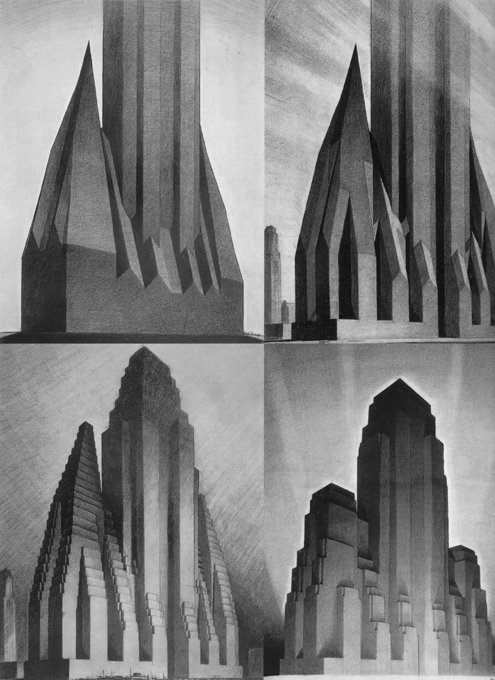
It’s been installed on his Topanga Canyon compound for a while, but Chris Burden’s Small Skyscraper (2003) will be on view in Pasadena, at the Armory Center for the Arts. Its dimensions, 35 feet high, with <400sf of floor area, were determined by the LA County zoning regulations for the largest structure allowed without a building permit. The work arose out of bureaucratic frustrations Burden faced when trying to construct a studio on the rural property he bought in 1991.
Though the Armory Center’s website calls it “quasi-legal,” noting that the outbuilding exemption Burden used has since been changed. And it’s not clear that his “hypothetical domestic use” or “added design features, such as a low roof parapet” ever complied with the code in the first place.
Once it crosses his property line, then, instead of this function-based envelope pushing, Burden’s transgressive interest transmutes into the sculptural. As he told Helen Stollas for The Art Newspaper,
At first, they [i.e., Burden and the architects Linda Taalman and Alan Koch, who approached him about showing an unrealized architectural project] considered developing it into an actual habitable structure, with sliding glass doors and a one-man elevator. “But I pulled back from that. I like it as more of a sculpture in the shape of a building,” he says. “It’s in that grey zone it; it could be a building, but when Mr Inspector comes knocking you say, ‘Well, that’s not a structure, it’s art.'”
Which neatly mirrors an actual legal battle being waged at the same time in Southport, Connecticut, where the local historic district filed suit claiming that the 40-ton concrete & rebar sculpture collectors Andrew and Christine Hall had installed on their waterfront property constituted a “structure” and thus required a [love this] “certificate of appropriateness.” [The State Supreme Court agreed with the town’s argument that it had jurisdiction because the sculpture “is ‘affixed’ to the land by virtue of its own ‘multi-ton weight’ and the force of gravity” (emphasis added for awesomeness). The Halls removed the sculpture, loaning it to a 2007 Kiefer exhibition at Mass MOCA.]
Burden’s building code experiment also serves as a nice, East Coast-West Coast, LA throwdown to New York’s OG, the grandmaster of all zoning envelope illustrators, Hugh Ferriss.

The Four Stages, Ferriss’s 1922 renderings of the Zoning Code of 1916, not only revealed to architects and developers how New York’s first skyscraper regulation constrained the size and shape of their projects; they predicted the city’s envelope-maximizing future.
Which is nice, because Burden says there’s talk of bringing Small Skyscraper to New York. He told Stollas that there are actually two extruded aluminum-and-2×4 Small Skyscrapers now: the California one, built for a 2003 exhibition at LACE and since installed in Topanga; and a European one, installed for ten days in Art Basel in 2004. “Since it was cheaper to just buy new materials when the work was shown in Switzerland, rather than ship the existing work over.”
Look, I’m as stoked as the next guy to see Burden’s sculpture, but why would any exhibition of it be predicated on the mere existence of two of them? Will it ever be cheaper to transport a Small Skyscraper than to build it locally? No. So why not build it? Why not build a hundred of them, a thousand, all over the place, a distributed city of Small Skyscrapers, wherever the zoning allows?
Or why not turn them into a platform, use Small Skyscraper‘s beautiful, minimalist, economical form to map out the invisible bubble of unregulated space and use across the country? Just type in your zip code, and the Small Skyscraper website will automatically generate plans for you to build the biggest permit-free structure/sculpture/structure/sculpture possible in your jurisdiction, too. Marin’s would be a doghouse, invisible from the street, while Houston’d be all hey hey, how big you want it? [If you get sued or fined, though, you’re on your own.]
But I guess that’s my project, not Burden’s. Actually, it also turns out to be the dream of Columbia GSAPP’s Kazys Varnelis, and probably of any and everyone who’s ever bloodied his head against a building code:
Perhaps, we imagine, after a confrontation with the authorities, Burden’s audacity might be accepted as his own business and, as our fantasy continues, we hear the sounds of construction in backyards citywide as hundreds, even thousands of small skyscrapers rise into the sky, turning the city into a latter day San Gimignano.
The reason Burden says “there is some talk of bringing them to New York” has less to do with Ferriss or LA or architectural libertarianism, and everything to do with the fact that there are now two Small Skyscrapers. And, because, as “Burden adds, when installed together, they somewhat resemble the Twin Towers.”
Sulcptural skyscraper build through a legal loophole [theartnewspaper]
Chris Burden | Small Skyscraper runs from 8/11 [through 9/11] til 11/11 [armoryarts.org]
